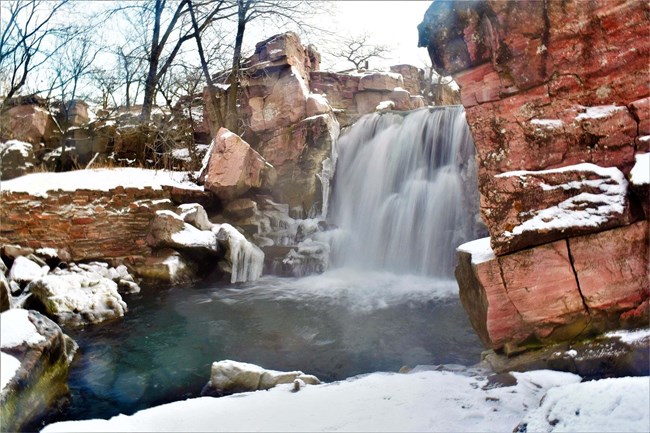Learn about NRCAs
The Natural Resource Condition Assessment (NRCA) Program provides framework, funding, and publishing support to parks to aid in the synthesis and documentation of natural resource conditions. Condition assessment reports are a tool to describe selected park resources, and record a snapshot of their current condition, identify trends, and identify potential or current threats and stressors. Understanding the condition and trend of natural resources is key for parks and NPS planners to appropriately prioritize and allocate stewardship resources.

NPS Photo.
Traditional NRCA Report: 2016
In an effort to better understand the natural resources and processes in this National Monument, a Natural Resource Condition Assessment was written and published in 2016. This assessment was a collaborative effort between the National Park Service and Colorado State University. This team chose 18 resources to be evaluated:
- Land cover and landuse |
- Water quality |
|||||
- Night sky |
- Prairie vegetation |
|||||
- Soundscape |
- Western prairie fringed orchid |
|||||
- Views and scenery |
- Sioux quartzite prairie |
|||||
- Climate change |
- Invasive exotic plants |
|||||
- Fire disturbance regime |
- Aquatic macroinvertibrates |
|||||
- Air quality |
- Bird community |
|||||
- Stream hydrology and geomorphology |
- Fish community |
|||||
- Topeka shiner - at risk biota |
- Pipestone quarries |
The assessment showed that four resources were in good condition: bird community, fish community, Topeka shiner, and pipestone quarries; ten resources were rated as having a condition of moderate concern: night sky, soundscape, views and scenery, fire disturbance regime, stream hydrology and geomorphology, prairie vegetation, western prairie fringed orchard, Sioux quartzite prairie, invasive exotic plants, and aquatic macroinvertebrates; two resources had a condition of significant concern: air quality and water quality; and two resources were not given a condition rating due to lack of data: land cover and land use, and climate change. Primary data gaps and uncertainties encountered were lack of recent survey data; uncertainties regarding reference conditions; availability of consistent, long-term data; and scientific understanding of the ecology of rare resources. Ecosystem stressors impacting park resources and their management exist both inside and outside park boundaries. Altered disturbance regimes such as fire and flooding, conversion and fragmentation of natural habitats, spread of invasive exotic plants and animal species that threaten regional biological diversity, altered hydrology and channel degradation of streams, and water pollution appear to be significant stressors of biological resources.
Successful management of resources within Pipestone National Monument will require acknowledging a “dynamic change context” that manages widespread and volatile problems while confronting uncertainties, managing natural and cultural resources simultaneously and interdependently, developing broad disciplinary and interdisciplinary knowledge, and establishing connectivity across broad landscapes beyond park borders.
Successful management of resources within Pipestone National Monument will require acknowledging a “dynamic change context” that manages widespread and volatile problems while confronting uncertainties, managing natural and cultural resources simultaneously and interdependently, developing broad disciplinary and interdisciplinary knowledge, and establishing connectivity across broad landscapes beyond park borders.
For other reports and natural resource datasets visit the NPS Data Store.
Source: NPS DataStore Collection 7765 (results presented are a subset). To search for additional information, visit the NPS DataStore.
Last updated: June 30, 2022
